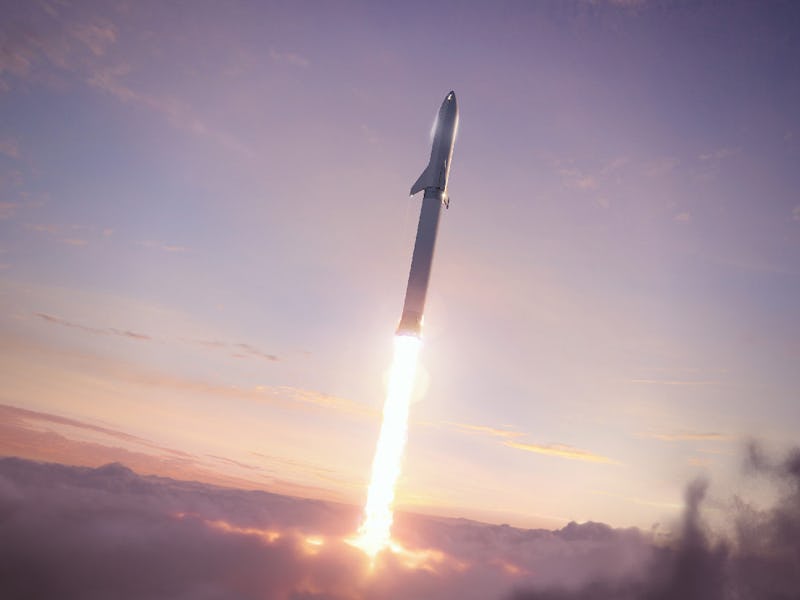SpaceX Starship: How Tesla batteries are helping to fly Elon Musk’s rocket
Elon Musk's two firms are working together.

SpaceX is using Tesla batteries in its Starship, it emerged this week.
The stainless steel rocket, currently under development ahead of a planned first mission in 2021, is part of the company’s big plan to send the first humans to Mars and establish a city by 2050. While the Falcon 9 and Falcon Heavy use rocket propellant to fly, the Starship is expected to use a mix of liquid oxygen and methane to take off.
That’s not the only surprising thing about the rocket. Images of the Starship Mk.1, a full-size prototype of the ship expected to be unveiled in full on September 28, show the rocket also packs some Tesla-branded batteries, showing how Elon Musk’s electric car company is also helping his space exploration ambitions.
“It would be pretty embarrassing to use a non-Tesla battery!” Musk wrote.
Embarrassing, maybe. For a rocket powered by an advanced combination of liquids, it’s perhaps not entirely expected that Tesla is going for the ride.
Ready for action.
SpaceX Starship: What the Tesla batteries are actually doing
The Starship has undergone numerous design changes during its development, but one that sparked surprise in the community was the switch from three rear fins to two. Musk explained on September 22 that this is because current analysis suggests, instead of using three fins that double up as legs, it could save weight to use two rear fins with separate airframe-mounted legs. Reduced weight means an easier rocket to launch, but Musk noted it’s an analysis that he’s “not fully bought into.”
As space enthusiast Everyday Astronaut noted, the flaps move to control the ship’s pitch, roll and yaw. It’s unclear how they are moving, but eagle-eyed users noted that a mysterious black box loaded into the rocket bore a strong resemblance to the battery pack used in the Tesla Model S and X. Musk’s comment suggested the battery is indeed being used to move the fins.
SpaceX Starship: Will future batteries power a launch?
Although Musk has expressed his commitment to reducing carbon emissions, SpaceX’s fuel-burning enterprise is a notable issue in the race to reduce.
At the International Astronautical Congress in Adelaide, Australia, back in September 2017, Musk explained how he wanted to reach zero carbon rocket flights by using a combination of techniques.
The Starship uses Raptor engines, powered by liquid oxygen and methane. The use of this fuel could enable astronauts on Mars to make more fuel from the atmosphere to leave and return home. This system would use a combination of carbon capture and the Sabatier process:
The process in action.
“Long-term, this can also be done on Earth,” Musk said at the September 2017 presentation. “Sometimes I get criticism for, ‘why are you using combustion in rockets and you have electric cars’. There isn’t some way to make an electric rocket. I wish there was. But in the long-term, you can use solar power to extract CO2 from the atmosphere, combine it with water, and produce fuel and oxygen for the rocket.”
It seems like rocket fuel is here to stay — for now. Musk suggested in July 2019 that NASA should explore using nuclear rockets to power its future journeys.